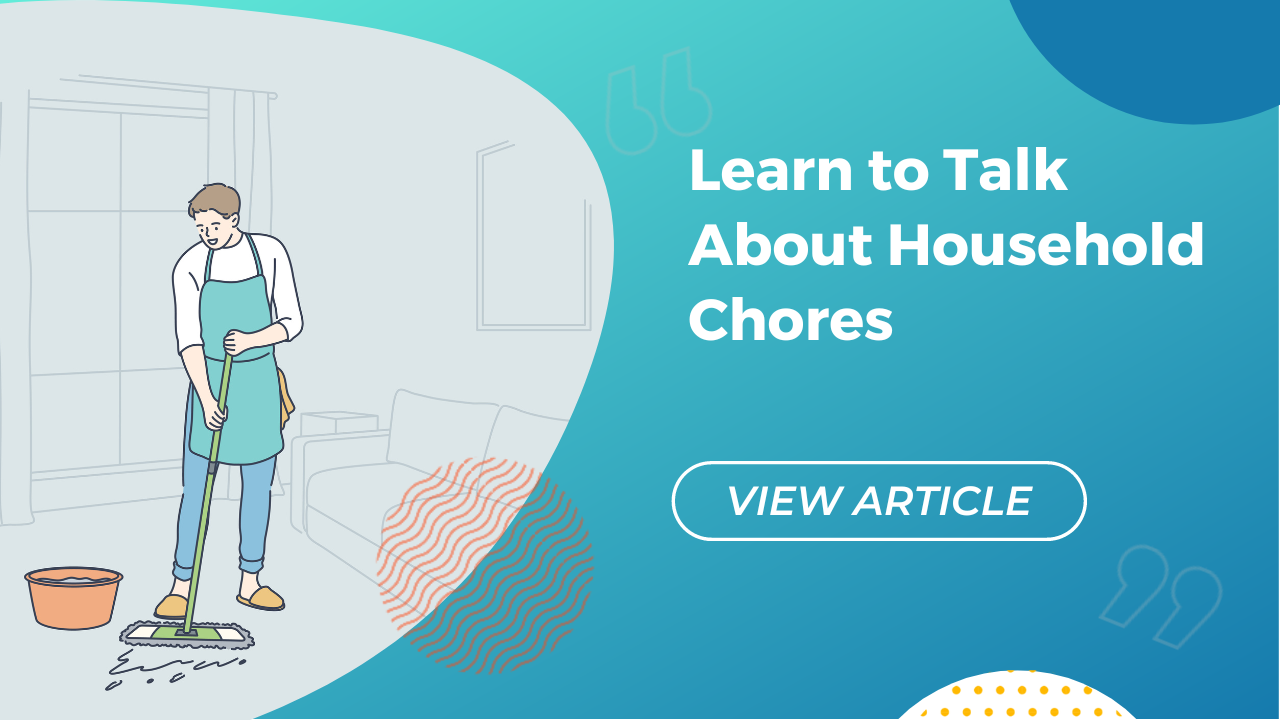- [email protected]
- +34 961258767
- Av. del Marqués de Sotelo 3, Piano 2, Porta 4, 46002 Valencia
Centro accreditato dall'Instituto Cervantes
Centro accreditato dall'Instituto Cervantes

When you’re learning a language, you’ll want to practice whenever you can. Talk about things you like to do, don’t like to do, your luoghi preferiti e ricordi, e persino cosa hai mangiato a colazione! Imparare le faccende domestiche in spagnolo ti aiuterà a spiegare la tua vita quotidiana e a sentire che le tue conversazioni sono più complete.
Also, you’ll be able to give more excuses or reasons why you can or can’t do something. Instead of a simple sí o no, you’ll have a much larger vocabulary to describe what you have to do. Ready to learn? Let’s go!
Now that you’ve memorized a list of vocabulary words, let’s figure out how to put them in practice. Simply knowing the vocabulary words won’t be much use if we don’t know how to put them in sentences. The above vocabulary words are Frasi di verbicioè sono composti da un verbo e da un altro. In questi esempi, sono composti da un verbo e poi dal nome.
Utilizzando il yo form of each verb, which is the first word in each of these sentences, you can say “I…” In order to conjugate them in the yo form, you’re going to take off the -ar or -er ending and add an “o”. For example, to say “I vacuum” I would say “Yo paso la aspiradora.”
Tuttavia, alcuni verbi sono irregolari nel yo forma! Hacer diventa hago e poner diventa pongo.
Analogamente a quanto fatto nella sezione precedente, puoi utilizzare l'opzione tú form to ask if someone else does that chore. For -ar verbs, you need to change the ending to -as, and for -er verbs, you’re going to change the ending to -es. For example, I would say, “¿Cortas el césped?” to ask “Do you cut the grass?
Forse vuoi dare un tocco in più alla tua frase, oppure quello che vuoi dire è un po' diverso.
Speriamo che tu abbia imparato qualche nuovo modo per descrivere le tue faccende! Ce ne sono altri che vorresti che ti mostrassimo? Faccelo sapere nei commenti.
| Cookie | Duración | Descripción |
|---|---|---|
| cookielawinfo-checkbox-analytics | 11 mesi | Questo cookie è impostato dal plugin GDPR Cookie Consent. Il cookie viene utilizzato per memorizzare il consenso dell'utente per i cookie della categoria "Analytics". |
| cookielawinfo-checkbox-funzionale | 11 mesi | Il cookie è impostato dal GDPR cookie consent per registrare il consenso dell'utente per i cookie della categoria "Funzionali". |
| cookielawinfo-checkbox-necessario | 11 mesi | Questo cookie è impostato dal plugin GDPR Cookie Consent. Il cookie viene utilizzato per memorizzare il consenso dell'utente per i cookie della categoria "Necessario". |
| cookielawinfo-checkbox-altri | 11 mesi | Questo cookie è impostato dal plugin GDPR Cookie Consent. Il cookie viene utilizzato per memorizzare il consenso dell'utente per i cookie della categoria "Altro". |
| cookielawinfo-checkbox-prestazioni | 11 mesi | Questo cookie è impostato dal plugin GDPR Cookie Consent. Il cookie viene utilizzato per memorizzare il consenso dell'utente per i cookie della categoria "Performance". |
| politica_cookie_vista | 11 mesi | Il cookie è impostato dal plugin GDPR Cookie Consent ed è utilizzato per memorizzare se l'utente ha acconsentito o meno all'uso dei cookie. Non memorizza alcun dato personale. |
Compila il modulo sottostante e il nostro team di ammissione ti risponderà entro 24-48 ore.